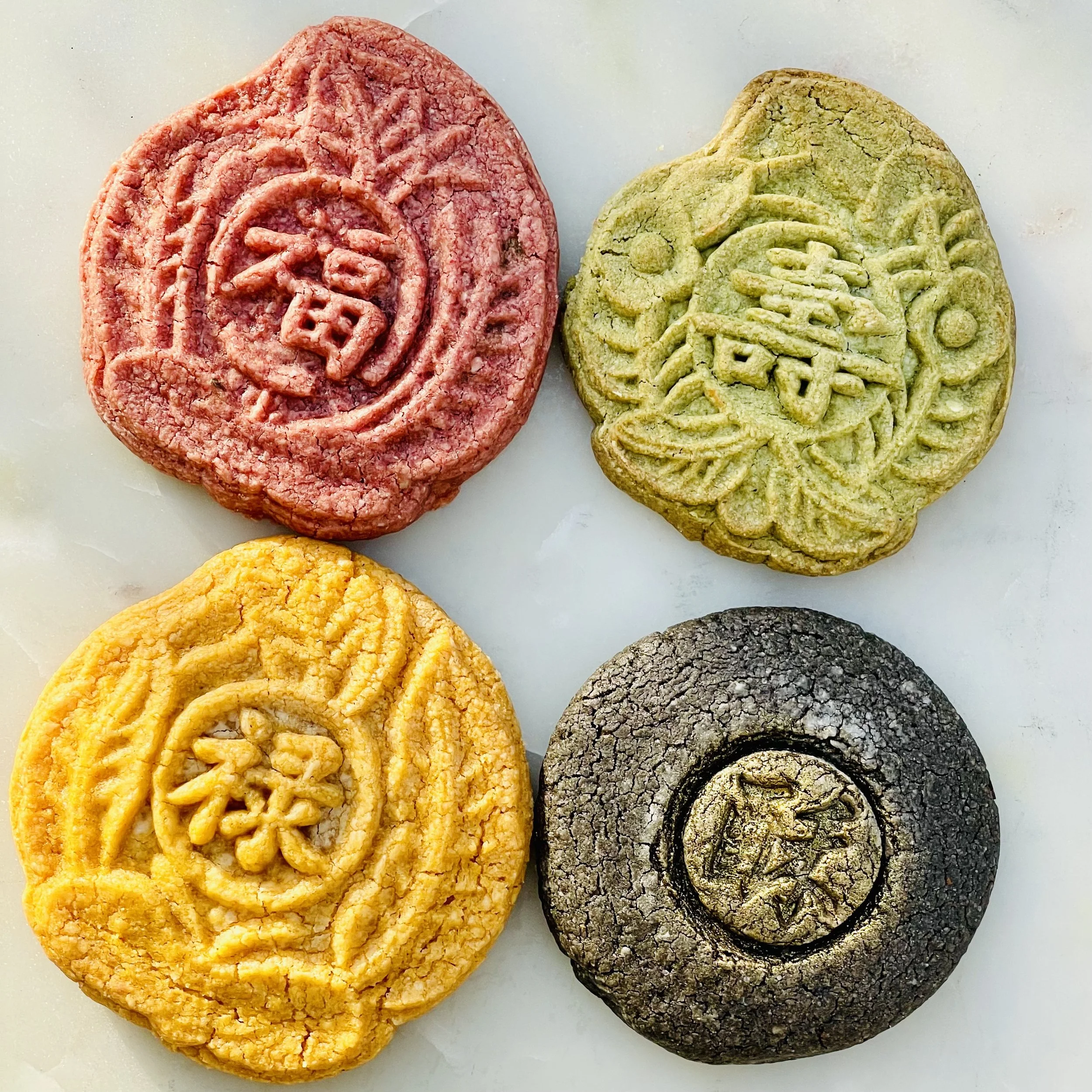FOUR SEASONS Sū or 四(Sì)季(Jì)酥(Sū)
Chef Jing’s Vegan Mochi Shortcake: A Shortcake of “Year,” A Bite of “Life”
Inspiration: Rice cake — a sticky block prepared from steamed glutinous rice — is one of the most popular in East Asian (Lunar) New Year cooking repertoire: the Japanese call it “mochi,” the Korean call it “tteok,” and the Chinese call it “nián gāo (年糕)”. In Mandarin and several Chinese dialects, “年糕” is a homonym for “higher year” or “grow every year” (“年高”), which means “a more prosperous year”. Besides, “年” (year) and “粘” (sticky) are pronounced the same (in mandarin as “nián”). In China, rice cake is an extremely versatile food: savory or sweet, stir-frying/braising/grilling/steaming/frying, with fish, shellfish, fresh meat, cured meat, poultry, game, leafy greens, root vegetables … Infinite possibilities, varying in taste and texture. For example, for the Lunar New Year feast, we can have yellow croaker braised rice cake (plain) with preserved mustard greens as one of the main dishes, or we can have a large, round longan-scented sweet rice cake as a perfect ending. Still wondering which flavor to go first? Our guest chef has prepared an assortment! Connected by the homonym, “Cookie of the ‘Year’” is a collection of nián gāo’s expression throughout the year, echoing the Chinese’ tradition of wrapping up the year at the Lunar New Year dinner. Chef Jing hopes you sense the seasonal changes: each cookie in the quartet represents a season with a typical filling. It is such a flavorful cookie that its long note even indicates the taste of life — after all, life is not only sweet, and it is the complex blend of taste that makes life interesting.
Spring 春 🌺: a period of growth, generation, vitality, and movement, as “wood” (木) in fengshui Wuxing five elements (五行), therefore, young green. Nourishing red jujube paste filling, ambrosial. The Chinese character “壽” (shòu) on its top means longevity.
Summer 夏 🌻: a period of swelling, flowering, expanding with heat, as “fire” (火) in fengshui Wuxing five elements, therefore vibrant red. cleansing lotus seed and Dragon Well tea in the mochi, slightly bitter. The Chinese character “福” (fú) on its top means felicity.
Autumn 秋 🍁: a period of harvesting, restraining and dryness, as “metal” (金) in fengshui Wuxing five elements, therefore golden yellow. Moistening pear jam filling, delightfully sour. The Chinese character “祿” (lù) on its top means munificence and reward of honor.
Winter 冬 ❄️: a period of retreat and coolness, expecting the next period of growth in its stillness, as “水” (shuǐ) in fengshui Wuxing five elements, therefore jet black. Boosting and spicy dried tangerine peel (chenpi) and ginger, balanced with warming chocolate, orange, and chewy chestnut. The Chinese character “酥” (sū) on its top means pastry.
(Vegan; Gluten-Free; natural food coloring from fruits and vegetables)
Blog prepared and edited by Yuxuan Cai
History Ph.D Candidate at University of Cambridge

